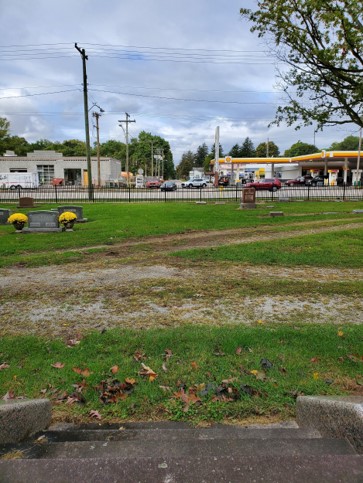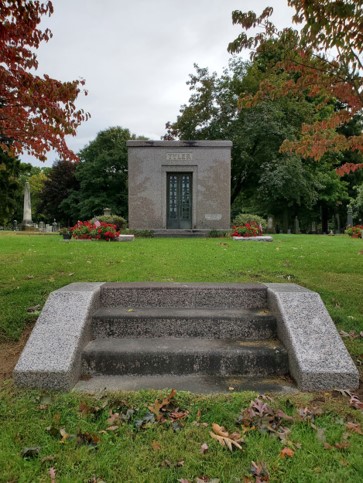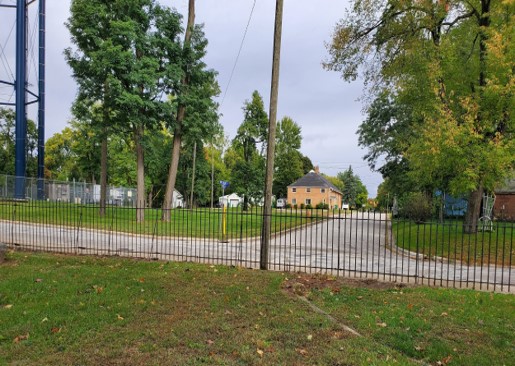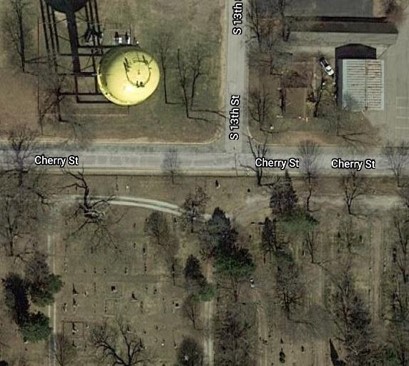Henrietta Hill Wilson
- Date of Birth: Date of birth: June 4, 1836
- Date of Death: March 14, 1905
- Location: BOND-1,1,2
- Obituary
Click NEXT for video text
Wilson Family Video Text
Charlotte “Lottie” Wilson was born in 1854 to Calvin and Henrietta (Hill) Wilson. Over time she became a nationally known artist and activist whose works were displayed throughout the eastern United States.
Lottie Wilson’s father, Calvin, was born in Halifax County Virginia in 1828 and moved to Niles in the late 1840s. Calvin Wilson married Henrietta Hill on January 6, 1853. Calvin operated a barbershop in downtown Niles and Henrietta worked as a hairdresser at the shop. Calvin Wilson was a charter member of the Niles Harrison Lodge, the first African American masonic lodge in the state of Michigan.
Lottie Wilson developed her talents at the Art Institute of Chicago, the first Black student to attend this school. Primarily a portrait and landscape painter, she was also known to dabble in the painting of fine china, needlework and sculpting. Wilson also taught classes in oil painting, pastels, ceramics, drawing and conservation.
Aside from her professional career, Lottie Wilson actively campaigned for women’s suffrage holding talks at churches and art studios. She placed special emphasis on the rights of Black women among suffragists.
Black women were not always welcome in white-led suffrage organizations and events so they formed their own groups. Wilson was an active member of the National Association of Colored Women, formed in 1896.
The organization fought not only for suffrage, but also equal rights for Black Americans.
Lottie Wilson served as a delegate to the 1899 National American Women’s Suffrage Association Convention. Here she proposed an amendment protesting the policy of separate railroad coaches for Black women in the South. After a lively discussion the amendment was unfairly tabled on the grounds that it did not directly relate to women’s suffrage!
Although Wilson’s work led her across the country and abroad, she returned to Niles often. In 1906, she married Daniel Moss and moved back permanently to her hometown. She continued to exhibit her work and hold classes at her home on the corner of Fifth and Ferry Streets until her death on January 16, 1914.
Lottie Wilson’s best known work depicts the historic 1864 meeting between President Abraham Lincoln and Sojourner Truth. Wilson presented this piece to President Theodore Roosevelt at the White House in 1902.
The painting then hung in the White House for a time, making her one of the first Black artists to have work displayed there.
In the 1980s, a conservator in Washington DC stumbled upon Wilson’s painting and reached out to the Niles community. Thanks to the research of local relatives of Wilson, the artist and her story resurfaced. The Niles District Library purchased the painting in 1982.
Lottie Wilson is buried at Silverbrook Cemetery with her parents, Calvin and Henrietta, and her children, Dennis and Callie.
 View across 11st Street fence to Michigan Street
View across 11st Street fence to Michigan Street Reverse view to Tyler Family Vault
Reverse view to Tyler Family Vault

 View across Cherry Street fence to 13th Street
View across Cherry Street fence to 13th Street Arial view of 13th Steet and Cherry Street
Arial view of 13th Steet and Cherry Street